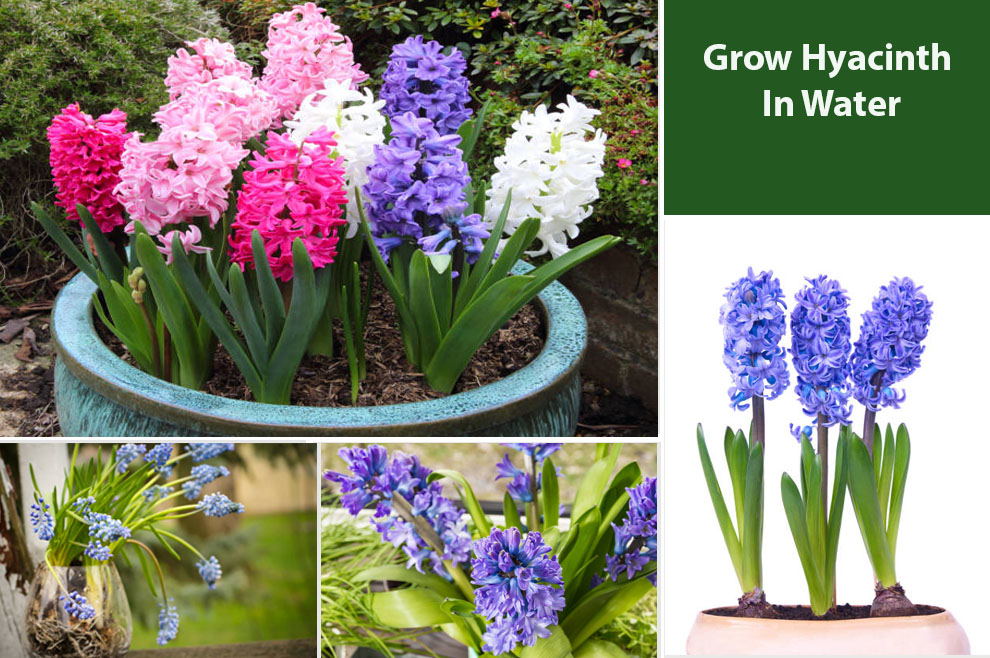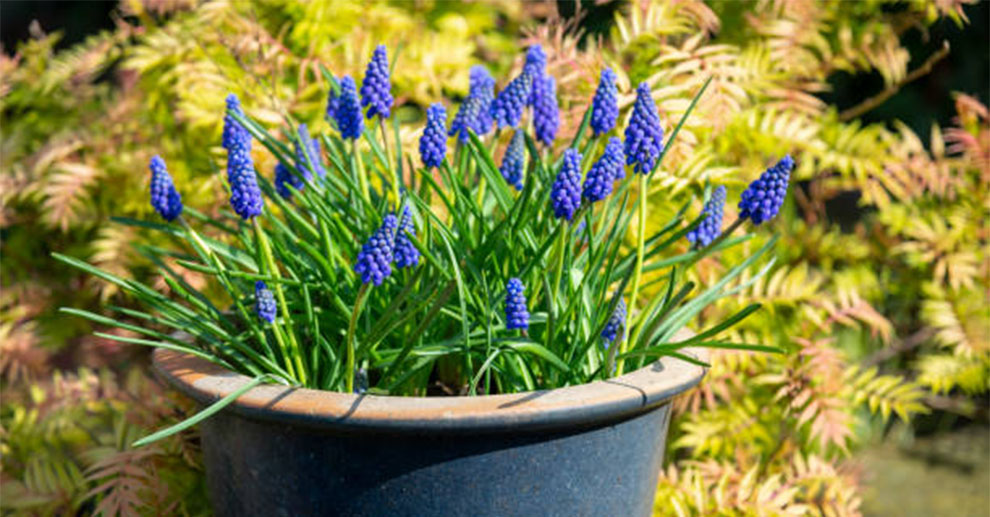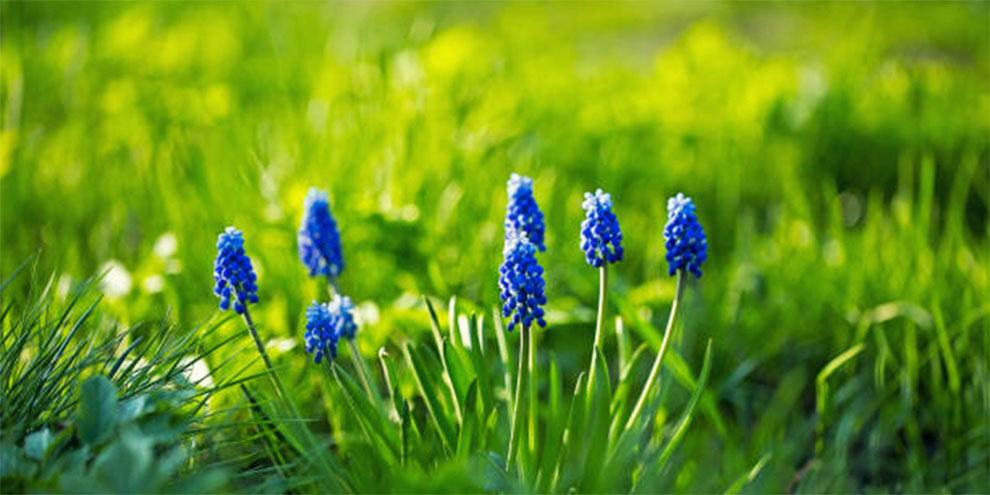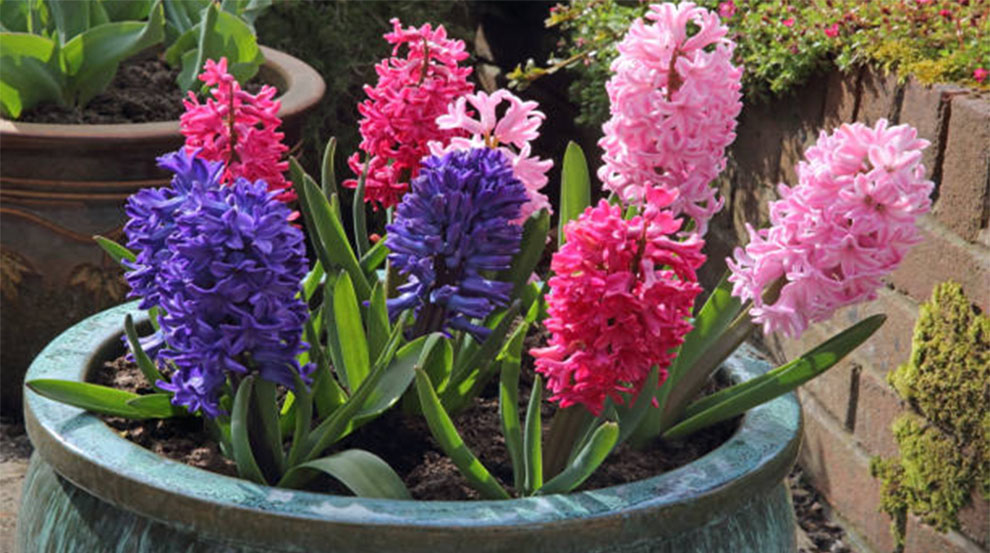How To Plant & Grow Hyacinth Bulbs In Water
To grow a hyacinth bulb in water, select a clear glass vase and add water until it’s just below the bulb. Place the bulb in a cool, dark spot for about 4-6 weeks. Once the roots emerge, move it to a well-lit area. Change the water regularly.

Eichhornia crassipes or Water hyacinths are known for their vibrant, lush foliage and delicate lavender-blue flowers. Thriving in different water environments, they effortlessly add a touch of natural beauty to indoor containers, aquariums, and ponds.
Cultivating them in water is a fascinating endeavor that may sound unusual but is totally possible.
This method eliminates the need for soil and showcases the plant’s remarkable adaptability to a fully aquatic environment. But the question arises – how to grow hyacinth in water?
Fortunately, Planting Water Hyacinths is straightforward, making it doable for beginners. Unlike traditionally growing hyacinth bulbs in soil, this method needs no specialized skills.
You can place the hyacinth bulb in a vase with roots submerged in water, letting the foliage float on the surface. The plant will naturally absorb the nutrients from the water, flourishing without much intervention.
This simplicity and the attractive visual impact water hyacinths bring make them an excellent selection for newcomers and experienced gardeners.
This guide will offer detailed instructions on the planting technique to help you build a captivating aquatic display that accentuates your space aesthetically and contributes to a healthier ecosystem. Let us dive in and explore this in detail.
Water Hyacinth Information
| Scientific Name | Eichhornia crassipes |
| Family | Pontederiaceae |
| Origin | South America |
| Habit | Aquatic Herbaceous Plant |
| Foliage | Glossy, Dark Green, Circular or Oval Shaped Leaves |
| Flowers | Showy Lavender to Violet, Orchid-Like Blossoms |
| Flowering Season | Spring to Early Summer |
| Growth Rate | Rapid |
| Reproduction | Primarily Through Vegetative Propagation |
| Invasive Nature | Highly Invasive, Can Form Dense Mats on Water Surface |
| Ecological Impact | Can Disrupt Native Ecosystems, Affect Water Quality |
| Uses | Ornamental in Water Gardens, Some Cultural Uses |
How To Plant Hyacinth In Water?
Below, we will take you through a step-by-step guide to planting hyacinths in water. Let us get started and address them in detail.
Step 1: Gathering Materials
You need a few basic materials for planting hyacinths in water, making this process wonderfully straightforward. Here is a list of all the materials you need:
1. Hyacinth bulbs: Begin by picking healthy hyacinth bulbs. You can find them at garden centers or nurseries.
2. A shallow container: Pick a container wide enough to give bulbs ample space to grow. You can use a ceramic dish, glass vase, or a similar container.
3. Clean water: Employ tap or distilled water, ensuring it is sans any impurities.
4. Stones or pebbles: These can anchor the bulbs and offer stability.
5. Optional decorative elements: You can add decorative pebbles, marbles, and stones for an aesthetic appeal.
The simplicity of this setup highlights the ease of planting hyacinths in water. With only a few readily available items, you can embark on a rewarding gardening venture that brings tranquillity and beauty to your space.
Step 2: Choosing Hyacinth Bulbs
When picking hyacinth bulbs for water plantation, you must pick viable and healthy bulbs. It helps ensure successful growth. Opt for firm, plump bulbs sans any signs of rot, blemishes, or mold. Do not use bulbs that appear shriveled or look soft.
Further, consider the variety you would like to grow. You can find several options, from purples to classic blues, whites, and vibrant pinks. Each species has its distinct charm.
So, select the colors that resonate with your aesthetic preference. Further, inspect for any specific planting recommendations or guidelines specified by the supplier, as different varieties may have slightly variable requirements for light exposure and water conditions.
With clear vision and healthy bulbs of your desired hyacinth variety, you are well on your way to a thriving water garden.
Step 3: Cooling the Bulbs
Before planting, you must give the hyacinth bulbs a cooling period, simulating winter conditions. Insert the bulbs in a dark, cool location with temperatures between 40-45°F (4-7°C).
This process, called forcing, triggers the bulbs, developing roots and prepping them for growth.
Let the bulbs cool for at least 10-12 weeks. Inspect the bulbs routinely to ensure the storage area is consistently dry and cool.
This step is necessary to encourage robust, healthy blooms once you introduce the bulbs into water. Patience during this cooling phase will be rewarded with vibrant, flourishing hyacinths in the following weeks.
Step 4: Preparing the Container
An ideal container should be shallow and wide to cultivate the hyacinths in water, offering the bulbs ample space to grow and spread their roots.
Look for a ceramic dish, a glass vase, or a similarly shaped container with a flat bottom. Transparency helps, as it lets you observe the root development, adding an aesthetic dimension to the process.
Cleanliness is incredibly pivotal. Thoroughly rinsing and washing the container helps remove the debris, dirt, or residues that might introduce harmful elements or impede growth.
Sterilizing the container before use ensures a pristine environment for the bulbs to flourish. Furthermore, plastic or clear glass containers are incredible choices.
They let the light penetrate the water, promoting healthy photosynthesis. With an aptly sized and clean container, you set the stage for a thriving hyacinth water garden.
Step 5: Planting Hyacinth Bulbs

Here’s for you step-by-step instructions on how to plant water hyacinth:
1. Positioning the bulbs: Insert the hyacinth bulbs in the container, ensuring they are snug but not overcrowded. Leave some gap between every bulb, offering them adequate space to grow.
You can also go with one bulb per vase approach. That’s actually much better.
2. Add anchoring material: Add a layer of stones or pebbles around the bulbs. It helps offer stability and prevent the bulbs from floating or getting too close.
3. Add water: Fill the container with room temperature water, ensuring the bulbs are partially submerged. The water level must reach slightly below the bulb’s base.
4. Place the bulbs in a well-lit spot: Move the container to a spot with adequate indirect sun. Please do not keep them under direct sun, as it may result in excessive algae growth.
Alternative Method To Root The Hyacinths Bulbs
Forcing with plastic bags: Instead of using pebbles, insert the bulbs in a plastic bag filled with damp moss or perlite.
Seal the bag and store it in a dry, cool place for about six to eight weeks. After the roots develop, move the bulbs to a container with water.
By adopting these steps, you are on your way to enjoying the exquisite beauty of the blooming hyacinths in water.
Step 6: Providing Proper Light
Hyacinths cherish indirect, bright light. For indoor hyacinth care and good growth, put this container near a window with filtered sun, avoiding direct exposure to the harsh sun rays.
Opt for a spot with morning sun and partial afternoon shade if planting outdoors. This balance ensures the hyacinths get access to adequate light without being overwhelmed.
Opt for a location with dappled shade to avoid overheating in warmer climates. Regularly monitor the light conditions, adjusting placements to maintain optimal lighting for healthy hyacinth growth.
Please know offering the right amount of light is imperative in nurturing robust blooms and lush foliage in your water-growth hyacinths.
Step 7: Keeping A Check On Water and Maintenance
Maintaining a consistent water level is quintessential for hyacinth growth. Inspect the container regularly and add water as necessary to keep it at the apt level, just below the bulb’s base. Change water with clean and fresh water if it looks stagnant or murky.
For optimal growth, maintain water quality by avoiding heavily mineralized or chlorinated water. Tap or distilled water left to stand for 24 hours for chlorine dissipation works best.
Periodically, you can skim off any algae or debris from the surface. However, change the water entirely if it becomes murky. This straightforward maintenance routine can help create a conducive environment for healthy hyacinths to thrive.
Step 8: Monitoring Growth

When your hyacinths grow, you can see the roots extending into the water and lush foliage floating onto the surface.
Gradually, you will start seeing the fragrant and vibrant blooms. Keep a check on the water level, ensuring it stays consistent.
Below are some troubleshooting tips that will come in handy:
1. Slimy roots: Stagnant water or overcrowding might result in root rot. So, thin out the overcrowded bulbs. Alternatively, you can also change water as it gets murky.
2. Yellowing leaves: Insufficient light exposure might result in yellowing leaves. So, move the container to a brighter spot.
3. Fading blooms: After flowering, hyacinths enter dormancy. In this while, you can trim the spent blooms and continue regular maintenance. You will see them blooming again in subsequent seasons.
You will nurture flourishing hyacinths in your water garden by addressing these issues promptly and monitoring growth.
Step 9: Enjoying the Blooms
Whenever in doubt about how to grow hyacinth bulbs in water, it is always better to look for advice. Since, it is very easy for the hyacinth plants to rot in water, be careful. Your patient nurturing will reward you with a spectacular display of lush foliage and vibrant blooms.
Their delicate fragrance will permeate the air, forming a soothing ambiance. Take time to admire their beauty and observe the aquatic ecosystem they have become a part of.
The contrasting colors, when growing in a pond against the water’s surface, can be an enchanting sight. They will bring a touch of nature indoors when grown in containers.
Overall, these blooms serve as a delightful centerpiece or gift. So, get set ready to enjoy the visual delight and tranquillity these water hyacinths bring to your space, a testament to the rewards of your attention and care.
Growing Hyacinths In Pond And Other Water Bodies

1. Pond Planting: Hyacinths thrive in ponds, lending an enchanting touch to the aquatic landscapes. Submerge their roots at the water’s edge, wherein they will gracefully float, adding vibrant colors to the serene setting.
2. Container planting: Containers can be a perfect solution if planted indoors or in smaller spaces. Their colorful blooms and lush foliage bring nature closer. Keep them near a window for direct sun and watch them thrive.
3. Aquatic elegance: In aquariums, hyacinths giveaway a captivating underwater scene. You can secure them with weights to avoid floating and witness the striking contrast they offer against aquatic fauna.
4. Fragrant beauty: Once in full bloom, hyacinths give out a delightful, invigorating fragrance, accentuating any space with their refreshing aroma. This aromatic addition is a bonus to their visual appeal.
With these adaptable options, you can cherish their fragrance and beauty in several aquatic settings, each with its unique charm.
What Problems Do Water Hyacinths Cause?
Though aesthetically pleasing, water hyacinths can pose significant ecological challenges. Their rapid proliferation in water bodies can disrupt the natural ecosystem by depleting oxygen levels and blocking the sunlight, resulting in a decline of native fish populations and aquatic plants.
Moreover, their dense mats can impede water flow, resulting in stagnant conditions that promote waterborne diseases and mosquito breeding. They also hinder recreational activities and clog irrigation channels, affecting navigation and agriculture.
Furthermore, hyacinths are invasive and outcompete native species, altering the aquatic habitats’ biodiversity.
Consequently, their uncontrolled growth demands vigilant management to mitigate their detrimental impacts on human-made and natural water systems.
